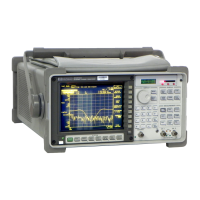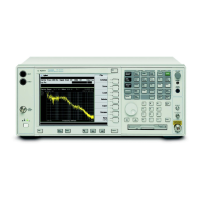Special Considerations
Why Coherence is Important for Curve Fitting
Coherence is a function of frequency. Each frequency point in the coherence
function is a real value between 0.0 and 1.0. A value of 1.0 implies that noise
does not contaminate the measurement at that frequency. Averaging allows the
measured coherence to converge on the true coherence, which is a measure of
the noise in the system, not the measurement. The value of the coherence
function is different with different test stimulus. If you use a chirp signal as the
stimulus, the coherence function measures signal-to-noise relationships. If you
use random noise as the test stimulus, the coherence function measures the
signal-to-noise relationship and distortion. At each frequency point, the
coherence and the number of averages are used to compute the measurement
variance. The measurement variance is the indication of the noise level in the
measurement data. Additional averaging gives a better estimate of the
coherence and a smaller measurement variance. Thus, as the coherence at a
specific frequency converges to a value farther below 1.0, additional averaging
is needed to obtain a small measurement variance at that frequency.
You can improve curve fit results by reducing the measurement variance across
the fit region. As an example, if the average value of the coherence across the
fit region is 0.9995, only 10 averages may be needed to obtain a good fit.
However, if the average value of the coherence drops to 0.95, then 200
averages may be needed for a good fit.
When the Analyzer Uses Coherence Data
The analyzer uses coherence data (if available) for the curve fit procedure.
However, you must have coherence data displayed on Trace B for the analyzer to
use it.
Also, keep in mind that coherence data is not available when:
the analyzer is in Swept Sine mode (The
analyzer automatically calculates a variance
in Swept Sine mode.)
the data is synthesized
the measured data is the result of fewer
than four averages
Agilent 35607A
Curve Fit Option 1D3 Operator's Guide
16-22

